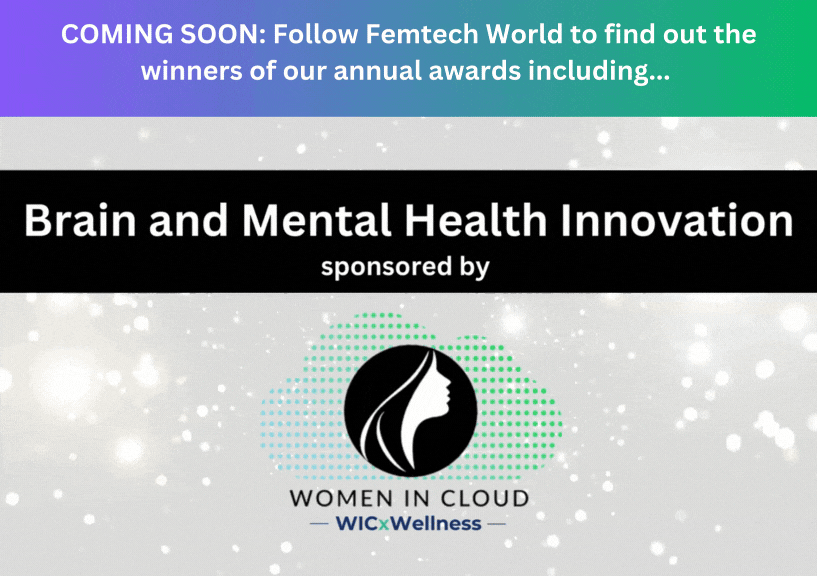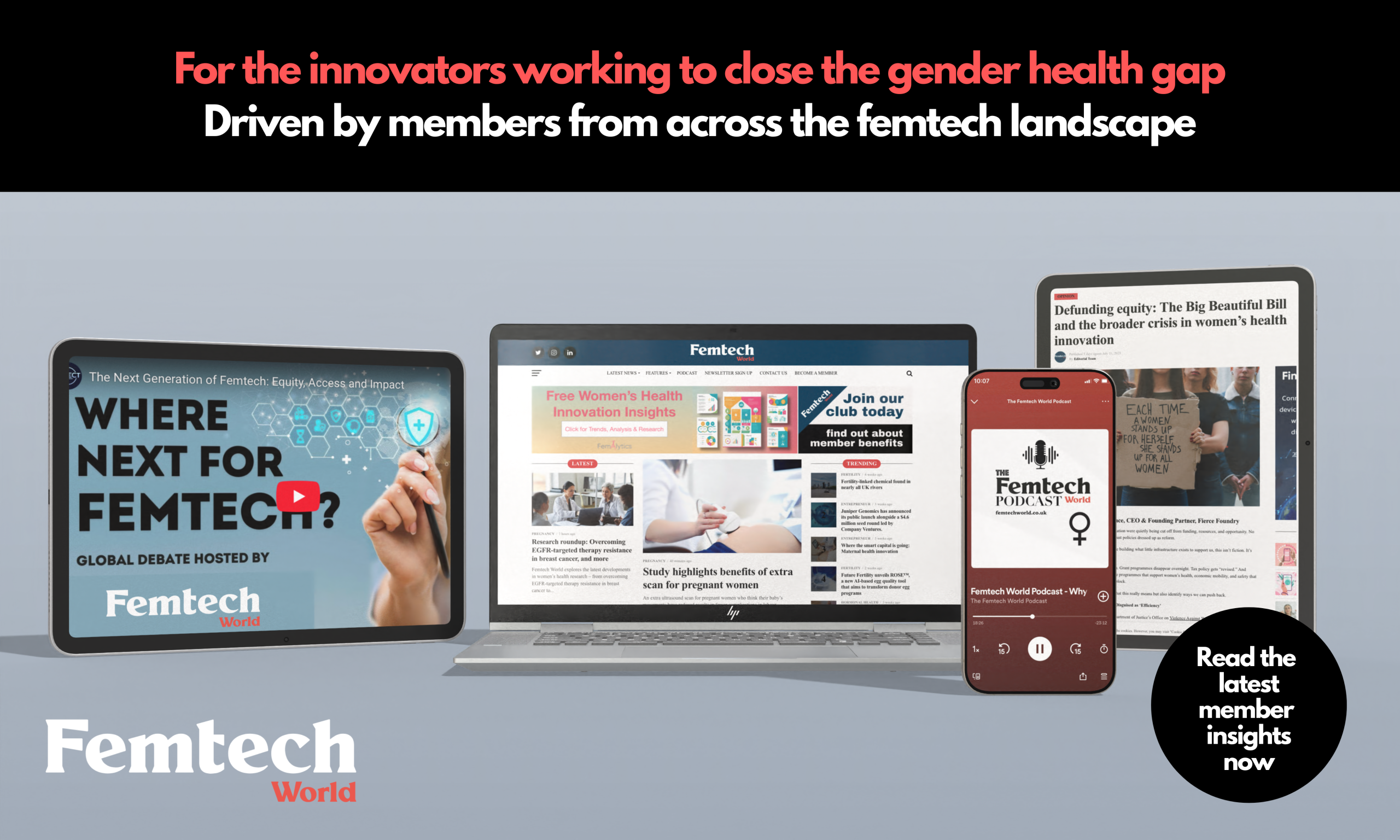Insight
How Niramai AI tech changes the breast cancer detection mission
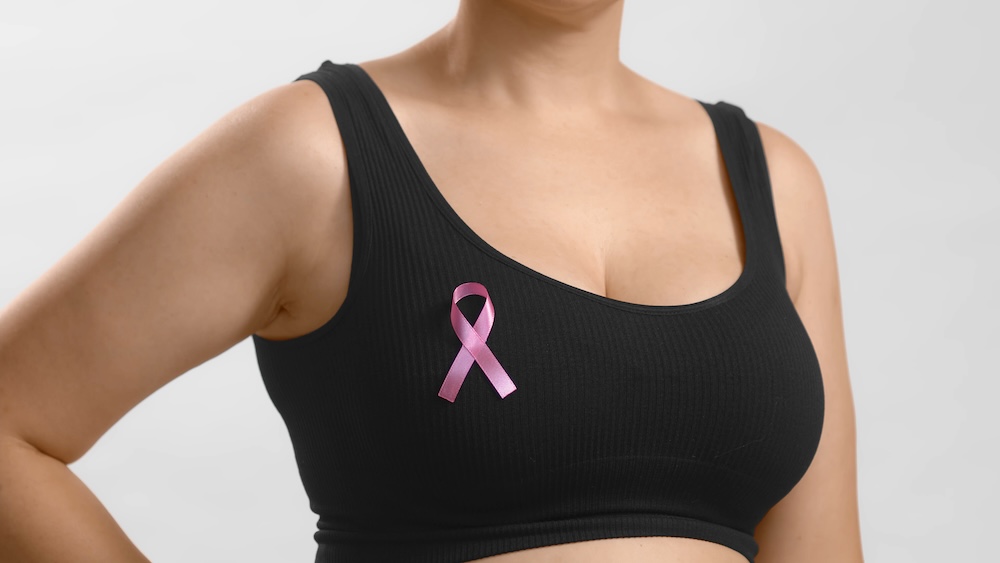
Corporations Can Close the Gap on Women’s Breast Cancer Screening; in an exclusive report by Gil Bashe, editor-in-chief of Medika Life, FINN Partners’ chair of global health and purpose
March marks Women’s History Month — a time to reflect on the progress and work to be done.
In the realm of medicine, women’s health has long lagged behind men’s, with breast cancer and heart disease diagnoses standing out as two glaring examples of this disparity.
Despite advances in medicine, a hidden and often overlooked challenge persists: the underdiagnosis of breast cancer in women with dense breast tissue.
The Challenge of Dense Breast Tissue
Dense breast tissue is not rare — it affects approximately 40–50 per cent of women.
The condition is characterised by a higher proportion of glandular and fibrous tissue than fatty tissue.
Tissue density increases the risk of developing breast cancer and makes tumors more difficult to detect using traditional mammography.
Mammograms can detect around 90 per cent of breast tumors in the least dense breasts but just 60 percent in the most dense breasts — this dangerous “masking effect” leads to delayed diagnoses and poorer outcomes.
The need for better screening tools for women with dense breast tissue is apparent. Early detection of breast cancer is crucial for improving survival rates.
When cancer is identified at an early stage, treatment options are more effective and less invasive, leading to better patient outcomes.
Research shows that regular screening mammography reduces breast cancer deaths by at least 20 per cent.
However, for women with dense breast tissue, the limitations of mammography call for alternative screening methods to ensure early and accurate detection.
A Personal Mission to Save Lives
Dr. Geetha Manjunath, the founder and CEO of Niramai Health Analytix, didn’t begin her career in healthcare — she’s a computer scientist.
But a devastating personal experience altered her path. Two of her relatives — just 42 and 38 — were diagnosed with late-stage breast cancer and passed away within six months.
Seeing firsthand the emotional, social, and economic toll pushed her to find a better solution.
“I knew there had to be a better way,” Dr. Manjunath reflects. And she found it by combining artificial intelligence and thermal imaging.
This is the potential power of AI applications – not artificial intelligence – but rather “augmented implementation.”
AI + Thermal Imaging = Early Detection
The Niramai innovative screening method, Thermalytix, uses AI to analyse thermal variations in breast tissue.
Unlike mammograms, this approach doesn’t require radiation, is pain-free, and can detect cancers in stage 0 or stage 1—well before a lump can be felt in self-exam or during a routine health professional visit.
The test is simple: a woman sits in front of a thermal camera, and the AI-driven system analyses the heat patterns in her breast tissue.
The system combines thermal radiomics and vascular radiomics to identify potential cancerous anomalies with remarkable accuracy.
Clinical studies have shown that Thermalytix has a false negative rate of less than 5 per cent.
Compare that to the 50 percent false negative rate of mammograms in dense tissue, and the potential for saving lives becomes pressing.
This technology is FDA-cleared, portable and easy to use—it can be set up in a corporate office or rural clinic and requires only 10–15 minutes per screening.
The test is noninvasive and entirely private: no touch, no see, no physical discomfort—just actionable information.
The results are analysed by AI and reviewed by a health professional, with detailed reports emailed directly to the patient within a day.
While it does not replace mammography, a health professional can now visualise tissue activity variations across the breast region, even in dense breasts.
Bringing Screening to the Workplace
In a game-changing move, Niramai is now conducting corporate-hosted breast health screenings in the US — the first of its kind.
This initiative has the potential to expand access to early detection dramatically.
A single device can screen approximately 30 women per day, and because the test is quick, private, and comfortable, participation rates are expected to increase.
FINN Partners, a global communication agency, became one of the first testing sites for this breakthrough technology.
The agency already has several programmes geared to support employee health, and knowing the heightened cancer risks associated with women with dense breast tissue, it partnered with Niramai to provide screening to employees and family members interested.
“We have come a tremendous way in leveraging technology to advance health, yet we must continue to educate on the importance of preventative medicine and screenings,” said Shannon Riggs, managing partner of FINN Portland, who advocated for the in-house screen program.
Unlike a traditional mammogram, the Niramai test is non-contact, radiation-free, and suitable for women of all ages — including those with dense breast tissue.
Niramai technology is portable, making it ideal for deployment not only in hospitals and imaging centers but also in rural areas and underserved communities where access to traditional screening tools is limited.
Overcoming Obstacles to Early Detection
Women with dense breast tissue require supplementary imaging tests, such as ultrasound or MRI, to detect abnormalities that mammograms might miss.
However, accessing these additional screenings presents real challenges:
- Limited Access: Not all healthcare facilities offer advanced imaging technologies like MRI or ultrasound, especially in rural or underserved areas.
- High Costs: Supplementary screenings can be expensive, and insurance coverage varies, leading to potential out-of-pocket expenses for patients.
- Scheduling Delays: High demand for specialised imaging can result in long wait times, delaying diagnosis and treatment.
- Discomfort and Invasiveness: Some women may find additional imaging procedures uncomfortable or invasive, deterring them from pursuing necessary screenings.
Niramai AI-driven technology removes these obstacles by providing an affordable, portable, and non-invasive alternative.
Its ease of use and high accuracy mean more women can access early detection without the hassle and cost associated with additional imaging.

Speaking to Women — Lisa Heathman’s Story
Lisa Heathman knows firsthand the importance of early detection — and how a twist of fate can change everything.
Lisa was healthy and active when a cycling accident left her with broken ribs and pain in her chest. That injury led her to undergo imaging, which revealed a tumour.
It was early-stage breast cancer — detected before symptoms would have otherwise shown up.
Lisa’s story underscores how early detection can save lives. However, not every woman will experience a lucky accident that leads to a diagnosis.
“That’s why tools like Niramai AI-based screening are so critical — they enable women to take control of their health before symptoms appear.
“Dense breast tissue is like a mask,” Lisa explains. “Mammograms couldn’t see through it. But my accident and an MRI saved my life.”
Niramai AI-driven technology lifts that mask — giving women the advantage of catching cancer early, regardless of breast density.
Empowering Women, Saving Lives
Niramai is more than just a technological breakthrough—it’s a tool for health access. Traditional screening methods have long underserved women with dense breast tissue.
Thermalytix closes that gap, giving women of all ages and tissue types a better shot at early detection and survival.
Dr Manjunath’s mission is ambitious but clear: “My vision is to take this test to every woman on earth and eliminate deaths from breast cancer.”
As we observe Women’s History Month, Niramai innovation is a testament to technology’s power to reshape health outcomes.
Early detection saves lives — and thanks to AI, that life-saving tool is now more accessible than ever.
The future of women’s health is digital, and Niramai is leading the way. The question is no longer whether this technology can make a difference—it already does.
The real question is, how can people’s workplace evolve into a convenient point of care?
News
Femtech describes a category. Women’s health describes a life
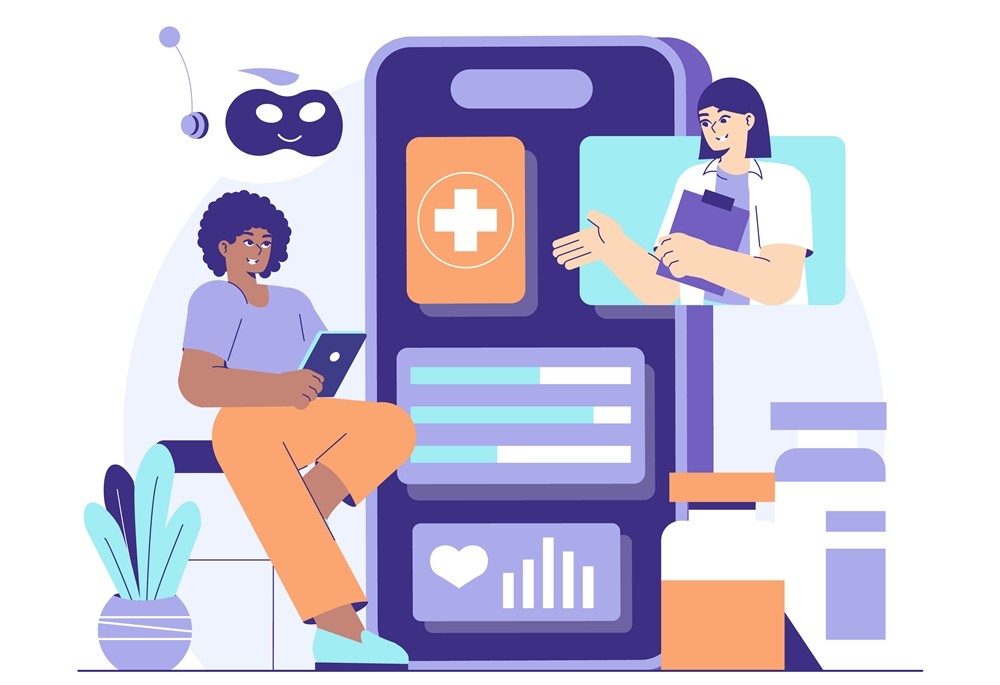
By Ema founder and CEO, Amanda Ducach
Ema’s claim to fame is that “she” was the first agentic AI for women’s health.
That means that as the CEO, I get to spend my days speaking with women’s health founders and funders about AI for women. And… I have noticed something that I wanted to share.
There’s a growing confusion in the market: “femtech” and “women’s health” are often used interchangeably. But while they’re deeply connected, they’re not the same.
All femtech is women’s health. But not all women’s health is femtech. Both matter. But the distinction matters, too.
Femtech: A Catalyst for Innovation, Not a Catch-All
Coined in 2016 by Clue founder Ida Tin, femtech provided a language for a long-overlooked corner of healthcare and has since become one of the fastest-growing verticals in digital health.
Femtech:
- Names a market that was previously invisible.
- Unlocks funding, innovation, and legitimacy.
- Centers historically neglected needs in health tech.
Today, femtech includes everything from fertility and contraception to menopause care, pelvic health, sexual wellness, mental health, and cancer screening.
It’s a category with momentum and one that is expanding.
But categories have limits. When we frame the full breadth of women’s health needs solely through the lens of femtech, we risk both narrowing the scope and limiting its impact.
That’s not a failure of the category. It’s a signal that we must build beyond it.
Women’s Health: Bigger Than a Market. More Complex Than a Milestone
Women’s health is a lifelong, whole-body experience.

Amanda Ducach
It spans:
- Cardiovascular, metabolic, neurological, and autoimmune conditions
- Mental health across life stages
- Hormonal transitions beyond reproduction (e.g., perimenopause, PCOS)
- The interplay of biology, identity, stress, and systemic bias
And yet, women remain underdiagnosed, undertreated, and underserved, partly because mainstream healthcare systems still don’t reflect their reality.
Women’s health encompasses more than just gynaecology. It’s a biopsychosocial model of care that sees women in full, not just in episodes.
Why the Distinction Matters
Femtech is growing, but funding remains concentrated in specific stages, including fertility, pregnancy, and postpartum. These are deeply important, but they’re just a fraction of the health journey.
Most of women’s health happens outside of reproduction.
Think: PMDD in adolescence, anxiety in early adulthood, migraines and autoimmune flare-ups, perimenopause in midlife, and heart disease risk post-menopause.
When investment flows into what’s easiest to monetise in the short term, we risk reinforcing a narrow story of what women need and when.
The result? Gaps in care, missed opportunities, and underserved lives. The risk isn’t that femtech is too small. It’s that we treat women’s health as if it is.
Femtech as a Bridge, Not a Box
The future isn’t about picking sides. It’s about connecting categories with complexity.
Femtech is an essential bridge: from invisibility to visibility, from stigma to innovation. But it’s not the endpoint. To meet women where they actually are, we must:
- Design for the whole hormonal arc, not just milestones.
- Expand data models to reflect lived experience across race, gender identity, and life stage.
- Invest in long-term conditions, not just urgent ones.
- Prioritise prevention, quality of life, and self-trust, not just outcomes that are easily measurable.
As the Health Innovation Network warns, without this evolution, even well-intentioned femtech could inadvertently widen the health equity gap.
The Bottom Line
Femtech is a powerful industry. Women’s health is a lifelong mission.
All femtech is women’s health. But not all women’s health is femtech.
Recognising that is how we build products and care systems that actually fit women’s lives.
Find out more about Ema at emaapp.co
News
Study uncovers protective function of morning sickness

Morning sickness symptoms such as nausea and food aversions are linked to healthy inflammatory responses that help protect both mother and fetus during pregnancy, new research shows.
Up to 80 per cent of early-stage pregnant women experience nausea, vomiting and aversions to certain foods or smells.
Researchers say these symptoms point to a delicate immune balance rather than health problems.
The responses appear to be part of the body’s mechanism for tolerating the half-foreign fetus while avoiding potentially harmful substances.
UCLA researchers studied blood samples from 58 Latina women in Southern California, measuring cytokines — proteins that regulate immune responses — while tracking morning sickness symptoms through questionnaires.
Sixty-four per cent reported odour or food aversions, mainly to tobacco smoke and meat. Sixty-seven per cent experienced nausea and 66 per cent vomiting.
Women with aversions to tobacco smoke showed a stronger shift toward inflammatory responses. Nausea, vomiting and food aversions were also tied to more pro-inflammatory immune activity.
Molly Fox, UCLA anthropology professor and corresponding author, explained the challenge for the immune system in pregnancy.
She said: “During pregnancy, a mother’s immune system faces a tricky challenge: it has to protect both her and the fetus from infection, but without accidentally attacking the fetus, whose genetic identity is half-foreign because it is half derived from the father.
“Normally, the immune system attacks anything that seems foreign, so in pregnancy, it has to carefully adjust to keep the fetus safe while still defending against infection.”
The researchers believe this immune balance protects mother and fetus while behavioural responses — such as avoiding certain foods — add another safeguard, especially in the first and second trimesters.
Daniel Fessler, UCLA anthropology professor and co-author, stressed the protective role of these symptoms.
He said: “Nausea, vomiting or aversions to foods or smells are not indications that something is going wrong for the mother or the fetus.
“It’s likely an indication that everything is moving along normally, and a reflection of the body’s healthy and helpful immune response.”
Fox noted that human pregnancies face unique challenges.
In many mammals, the fetal compartment has barriers separating it from the mother’s blood supply, where her immune cells are.
But in humans, we have a unique setup — fetal cells are bathed in maternal blood. Humans have the most invasive of all placentas, burrowing deep into maternal tissue.
So humans need unique strategies to prevent the mother’s immune system from attacking the fetus.”
Fessler added that these responses may be evolutionary adaptations.
The researcher said: “Nowadays, you will see labels on packages of ground beef or soft cheese that warn pregnant women to be cautious about these products because of the risks of foodborne illness during pregnancy.
“Aversions to certain odours and foods, and nausea and even vomiting, appear to be evolution’s way of achieving that same objective.”
The team said their findings could help reinforce the idea that nausea and vomiting are normal pregnancy symptoms with biological roots, potentially supporting calls for workplace adjustments and reducing stigma.
Pregnancy
Childhood trauma in mothers increases preterm birth risk

Mothers who experienced childhood trauma face nearly double the risk of preterm birth, with 12.6 per cent delivering early compared with 6.7 per cent of those without trauma, new research has found.
The study reviewed 823 mothers who gave birth to 1,285 children between 2011 and 2021, finding that 38 per cent had lived through two or more adverse childhood experiences.
Specific traumas such as physical abuse, emotional abuse and exposure to parental violence were most strongly linked to premature delivery.
Adverse childhood experiences (ACEs) are potentially traumatic events in childhood, including abuse, neglect and household disruption.
Children may be affected by witnessing such incidents even if not directly harmed.
Preterm birth, defined as delivery before 37 weeks of pregnancy, can increase health risks for newborns.
Dr Molly Easterlin, neonatologist at Children’s Hospital Los Angeles and assistant professor of clinical paediatrics at the Keck School of Medicine of USC, said the results highlight the lasting consequences of childhood trauma.
“These findings provide further evidence that the effects of adverse childhood experiences may be passed from generation to generation and support action through public health and policy initiatives and clinical care to prevent and mitigate childhood trauma.”
Most of the mothers studied (62 per cent) reported zero to one adverse childhood experience, while 38 per cent had two or more.
The researchers suggest obstetrics teams should consider screening for ACEs to help guide care and identify families needing more support or closer follow-up.
The study indicates that childhood trauma may affect health outcomes long after youth, extending into reproductive years.
According to the Centers for Disease Control and Prevention, ACEs include physical, emotional and sexual abuse, neglect, and different forms of household dysfunction.

 News9 hours ago
News9 hours agoMothers’, not fathers’, mental health directly linked to their children’s, study shows
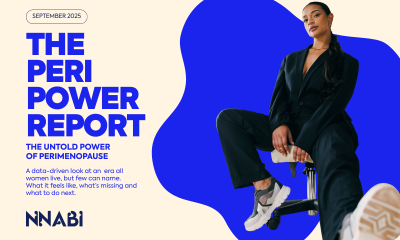
 Menopause5 days ago
Menopause5 days agoNew report exposes perimenopause as biggest blind spot in women’s health

 News8 hours ago
News8 hours agoScientists turn human skin cells into eggs in IVF breakthrough

 Entrepreneur3 weeks ago
Entrepreneur3 weeks agoThe Future of femtech: Rebuilding the investment landscape

 News1 day ago
News1 day agoDaily pill could delay menopause ‘by years,’ study finds

 Entrepreneur4 weeks ago
Entrepreneur4 weeks agoUCL spin-out raises £2.5m to improve infant health with breast milk microbiome

 News4 weeks ago
News4 weeks agoWeightWatchers debuts menopause programme with Queen Latifah
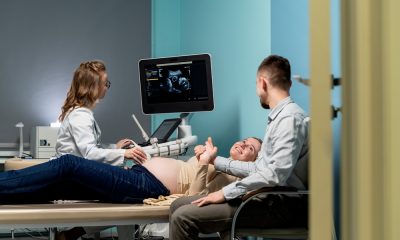
 News4 weeks ago
News4 weeks agoSpinout awarded £1.75m for AI-powered fetal ultrasound trial
















